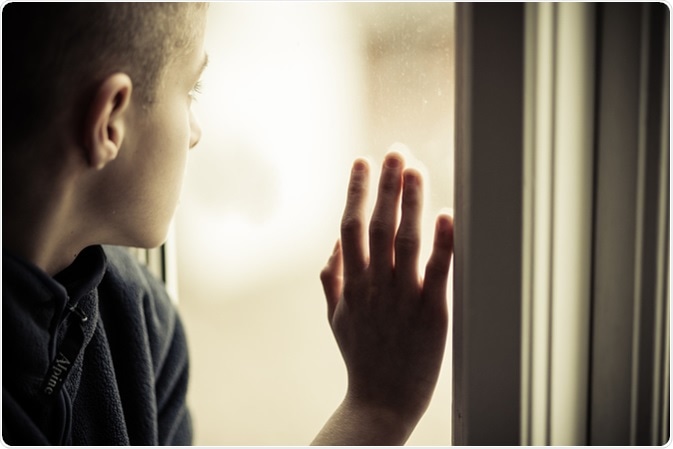Launching 1st March 2023. Also check out: https://www.thailandmedical.news/
Children typically undergo extreme stress at some point in their lives, but recover well without undue delay. In some cases, however, children fail to recover, and develop symptoms of stress that persist long-term, preventing them from functioning normally or establishing good relationships.

Children with PTSD develop symptoms, such as:
Some symptoms may overlap with those of attention deficit-hyperactivity disorder (ADHD) especially in adolescents with PTSD.
It is estimated that about 5% of adolescents show signs of PTSD at some point, and it is more common in girls than in boys (8% vs 2.3%), increasing with age. The prevalence in younger children is not known.
An event is always necessary to trigger PTSD, such as:
Other risk factors include:
If a child shows symptoms that could suggest PTSD or any mental disorder, it is important to consult a professional health care provider to diagnose and treat the child. A history of an event that triggered the PTSD is always present in this condition. Getting this history is often difficult due to the child’s avoidance of the topic, and requires gentle and skilled handling.
The DSM-IV-TR criterial include three clusters of symptoms:
While such symptoms may occur following severe stress, they usually recede within a few weeks at most, leading to a diagnosis of acute stress disorder. When a specified number of symptoms from each of these clusters is present for a month or more, and responsible for poor functioning or significant distress, PTSD is diagnosed.
Following the diagnosis, the child must be given all opportunities to feel safe, ensuring support from family and school, as well as the child’s friends, as well as protection against repeated trauma as far as possible.
Psychotherapy
Psychotherapy, giving the child a safe environment and age-appropriate ways to express feelings safely, by speaking about them, drawing, playing, or writing about them, is useful in drawing out the child, and may involve the family or a group as well.
Trauma-focused cognitive-behavioral therapy
Trauma-focused cognitive-behavioral therapy (TF-CBT) is the most useful technique in the treatment of this disorder. Here the child is helped to understand the present situation and then trained in ways to break the pattern of thoughts and feelings by changing the behavior in a planned manner. This helps significantly to keep worry and fear levels down by helping the child to cope in better ways with anxiety, recognize and change disturbing feelings and thoughts through preplanned behavioral changes, while functioning normally.
Eye movement desensitization and reprocessing
Eye movement desensitization and reprocessing (EMDR) is a combination of CBT with directed eye movements, but it needs to be further studied in children. Its efficacy is believed to be probably due to the CBT component.
Other interventions
Special interventions may be needed for children who deal with PTSD by turning to drugs or other substances, indulge in inappropriate sexual behavior or have very disturbed behavioral patterns.
Medications
Pharmacotherapy is not generally recommended in children, because of the risk of increased irritability, further sleep disruption and poor attention.
While all children who undergo extreme stress do not develop PTSD, it is important to reduce its incidence by being on the lookout to prevent the triggering events, such as child abuse, injuries or violence. The type of event and the nearness of the child to the event are both significant in predicting the likelihood of PTSD in the child.
Psychological First Aid is a mode of supporting children present during natural or manmade calamities by comforting them, dealing properly with their emotional and behavioral expressions, and helping them learn to calm themselves and cope with the new demands of the situation. The children who need more care are then referred for specialized help.